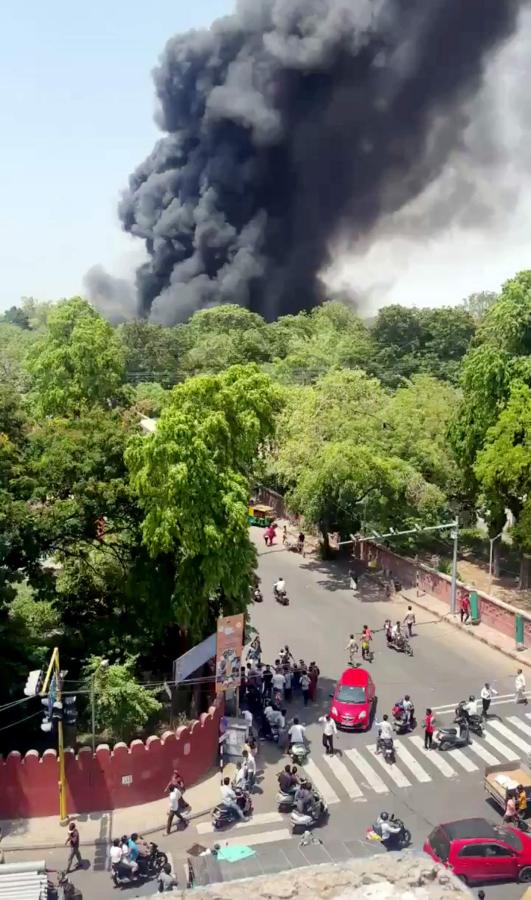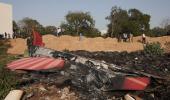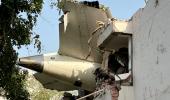'The speed at which an aircraft lands or takes off, even a single object can work as a bullet.'

Though many are hurriedly speculating that a bird hit could be one of the reasons for the crash of AI 171, it requires more evidence from the black box to identify the exact reasons for the tragedy.
Both small and big birds can become entangled in aircraft engines or get ingested, potentially causing damage, mechanical issues or a fatal crash.
When small birds are found lodged in the engines, maintenance teams remove them and perform the necessary cleaning and inspections. Larger birds when ingested into the engines can result in a loss of thrust causing a fatal crash.
One of the first air crashes due to bird collision recorded in aviation history was in 1912. Pilot Carl Roger's aircraft was struck by a seagull while he was flying from one coast to the other in the United States.
Captain Rogers was killed as his aircraft crashed in California.
Although, bird strikes do not happen regularly, birds are a menace for aviation across the world.
Most bird hits occur during take off/landing or below 3,000 feet. They usually take place in day time.
US Airways flight 1549 captained by Chelsey Sullenberger ditched in the Hudson river in 2009 after a bird strike shortly after take-off from LaGuardia airport in New York. All 155 crew and passengers miraculously survived.
South Korea's Jeju Air crashed, killing 179 people last year after a bird strike.
"Drainage, sewage water around airport (water birds), plastic garbage (attract kites), meat shops, food waste (crows), pigeons (people feeding) are some of the reasons that attract birds," says Dr Kishor Rithe, Director, Bombay Natural History Society, the 142-year-old NGO that has been in the forefront of wildlife conservation.
"There are bird habitats near several airports, but most importantly, civic issues like garbage dumps and swamps attract birds rather than the bird habitats," Dr Rithe adds.
"There is an urgent need for civic agencies to address such issues to prevent birds and their movements around or at the airports," says the computer engineer who has been with BNHS for 25 years and director since 2023.
Foraging or search for food is a basic need for birds.
Runways or the airport provide open habitats. The grass on either side of the runway provides a rich habitat for insects. "This becomes a ready feeding and roosting site for birds," says Dr Sujit Narwade, deputy director, BNHS based in Jaipur.
The species of birds vary -- a coastal city like Mumbai would have shorebirds, while Hyderabad would have grassland birds.
As per the DGCA guidelines, every airport has bird control measures. Airports employ staff that use fire crackers, boom guns etc to shoo birds.
"It is very important to ensure that birds do not appear in the flight path. The speed at which an aircraft lands or takes off, even a single object can work as a bullet," explains Dr Narwade.
Rigorous environmental assessment should be carried out and more importantly, followed to prevent such accidents. Airports should be situated away from migratory corridors and wetlands.
Unfortunately, a solution has not emerged due to the indifference of civic administrators and planners. Even as the number of flights/airports are increasing, the habitat for birds has shrunk and is constantly being encroached upon.
This issue needs urgent, focussed and targetted attention.
BNHS has studied bird hazard threats at 17 airports in India and has been extensively studying the Navi Mumbai international airport since 2018.
Vultures and kites were one of the major bird groups found in such kind of incidences, but the vulture population has reduced by almost 99%.
"It's very difficult to say which species is more vulnerable because it depends on the habitat. An airport in the Himalayan region will have different species, while one in the desert will have different types of birds," says Dr Narwade.
"Usually birds keep away from human beings or infrastructures, but we haven't left any space for them so where they will go?"










